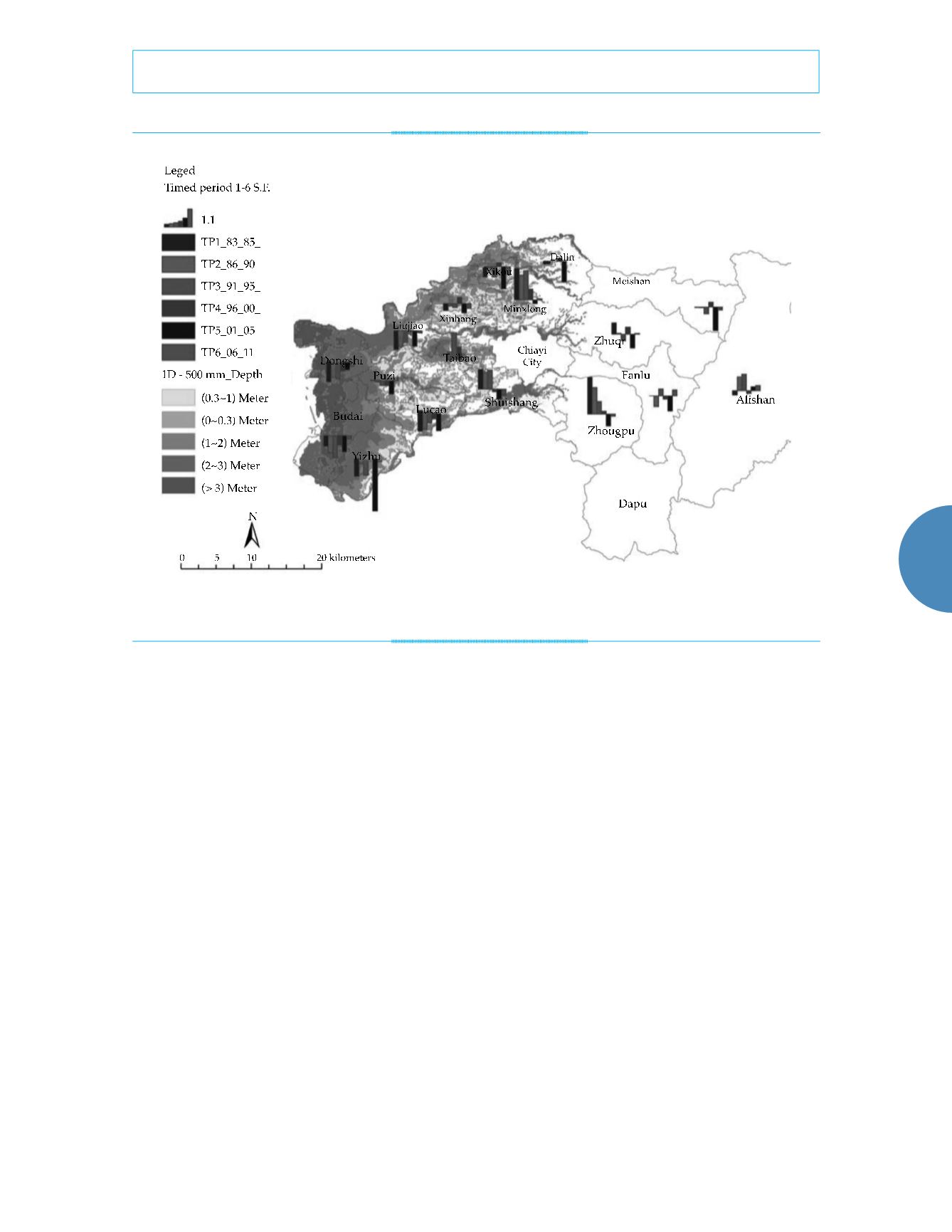
15
Tecnología y Ciencias del Agua
, vol. VIII, núm. 2, marzo-abril de 2017, pp. 5-18
Lee
et al
.,
Relationships between floods and social fragmentation: A case study of Chiayi, Taiwan
ISSN 2007-2422
•
social fragmentation may specifically reflect on
the degree of social integration of social system.
The less social fragmentation, or let’s say, the
more social integration is a chance to overcome
the natural hazards at local level. Thus, instead
of social vulnerability, this paper highlights the
relationship between social fragmentation and
natural hazards.
In addition, the social fragmentation is able
to reflect the local characteristics, but hard to
manifest them onto spatial distribution. Thus,
this paper will contribute to mapping the longi-
tudinal indicators of social fragmentation on the
spatial distribution. The efforts help to illustrate
the local characteristics of social structure in
the map and to explain how flood map interact
with the trends of social fragmentation as well.
This paper identifies four types of social frag-
mentation, including “continuous high social
fragmentation,” “transformed social fragmen-
tation,” “fluctuating social fragmentation” and
“continuous low social fragmentation.”
This study adopts migration and marriage
as indicators of social fragmentation, because
the decision of migration and marriage are
usually based on the household units. Thus, the
migration and marriage indicators are able to
represent local characteristics in the household.
Another social system is a community basis.
Communities represent local characteristics
among the households. Although this study
cannot capture them owing to data avail-
ability, however, the other indicator including
neighborhood, organizational mobilization,
social network, trust, etc. will be suitable for
the chosen factors of social fragmentation for
future studies.
Conclusions
Individuals and institutions should move from
“crisis fighters” to “proactive and systematic
risk managers” (World Bank, 2013). After all,
understanding more about the changes of
Figure 2. Overlay analysis of the trend of social fragmentation in six time-periods.


